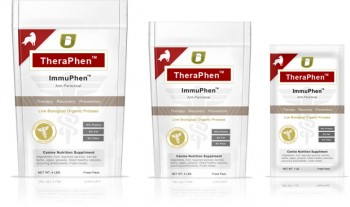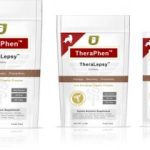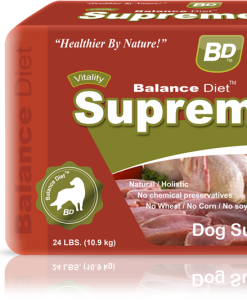ImmuPhen-Anti-Parisitical
$39.97 – $799.97
ImmuPhen™ has a precision balance of nutrients your dog requires for a longer, healthier life! Expertly hand crafted in USA
TheraPhen Supplements not food
- Sizes/Pricing
- Ingredients
- Feeding/Storage
- Gauranteed Analysis
- AAFCO Statement
- Description
- Additional information
- Reviews (0)
ImmuPhen Anti-Parisitical Program
Parasites occur not only in Third World countries. Eighty-five percent of dogs have at least one form of parasite. Some authorities believe that the true figure may be as high as 95 percent. This means no dog is completely immune from parasitic infestation.
What exactly is a parasite? A parasite is defined as any organism that lives on, or in, the body of another organism. In dogs, parasites will feed on their cells, the food they eat, and even on the supplements taken. They range in size from microscopic single-celled organisms to tapeworms that can be up to 12 metres in length. Regardless of the size of the parasite, all can cause damage to the body.
Symptoms and Sources
Parasites often mimic other disorders or produce no noticeable symptoms at all. When they do cause symptoms, a wide range can be displayed. The most common symptoms include:
- diarrhea and/or constipation
- gas, bloating, and cramps
- rectal itching
- persistent skin problems
- droopy eyes
- lack of energy
- disturbed sleep
- muscle cramps or joint pain
- post-nasal drip
Parasites can affect tissue anywhere in the body. Many disorders have been associated with them, including arthritis, appendicitis, weight problems, cancer, and epilepsy. Parasites can enter the bloodstream, so they are able to travel to any organ in the body. This can cause problems that are often unrecognized as parasite-related and can result in an incorrect diagnosis. Parasites cause damages not only when they feed on cells, but also when they excrete their waste in our bodies. This waste poisons the body, overworking the organs of elimination and weakening the immune system.
Parasites can enter the body through the mouth, the nose, or be absorbed through the skin. They can also be transmitted via insect carriers.
Because exposure to these carriers can also cause a condition known as candida (an overgrowth of yeast in the intestinal tract), candida and parasites tend to appear together.
Parasites survive best in an unhealthy internal environment. In order for the intestinal tract and colon to be healthy, there must be a balance between “good” and “bad” bacteria. Once the ideal ratio (80:20) is disrupted, the intestinal environment becomes conducive to parasite infestation. Factors that contribute to this imbalance range from drugs such as antibiotics, immune-suppressants, and steroids to a diet too high in refined carbohydrates.
Purge Them!
What is the best way to get rid of parasites? First, look to diet. As candida and parasites tend to coexist, it is wise to treat both simultaneously. This will require strict adherence to an anti-candida/parasite diet emphasizing organic vegetables and excluding refined carbohydrates, sugar in all forms and commercial processed foods (See: Supreme V Dog Food or ask about our Therapeutic foods).
Before serving an anti-parasitic supplement, make sure the bowels are working efficiently. If your dog is not having regular bowel movements (at least one and ideally two to three per day), dogs may end up reabsorbing toxins back into their system. Therefore, it is important to start with a detoxification program that focuses on the colon but also does some cleansing of the liver and other channels of elimination (i.e. kidneys, skin, lungs, etc.). An herbal cleanse with leafy greens, which brings water to the bowels, is most effective (Purate™). This will prepare the body for the cleanse, and it will also help in reducing the die-off reaction once you start the parasite cleanse program.
Minerals
Natural Montmorillonitic Colloidal Silicate Minerals Trace Element Catalysts with Ion Exchange Factors in their Natural Synergistic Relationship
Silicate Minerals – or clay mineral systems are Nature’s “storehouse” for the largest group of chemical elements in the mineral kingdom.
Trace Elements – are chemical elements used by organisms in minute quantities and held essential to their physiology – a branch of biology dealing with organic processes, activities, and phenomena incidental to an organism or any of its parts, and characteristic of life or of living matter. The role of trace elements is catalytic, although not necessarily exclusively so. They play a most important part in many organic processes which they help to regulate when present in quantities as small as parts per million or parts per billion: e.g. copper is reported to be effective in plant life when present in a concentration as low as one part per 10 million, molybdenum is effective when present in one part per 200 million, and cobalt is effective when present is one part per billion. While the quantity of any one element may be small and effective compared to another, no element functions alone, but only in conjunction with others, equally as important.
Catalyst – is a word coined by the great Swedish Chemist Berzelius to describe substances that speed up chemical reactions but which come through these reactions themselves unchanged.
Ion Exchange Factors – are associated with the electrical phenomena growth. All organic activities and processes of growth in any living organism, or any metabolic function associated with sustaining life of any kind, requires elements of ion exchange. CATIONS: (+) carrying a positive electrical charge, and ANIONS: (-) having a negative potential are constituents of acids, bases, and salts that become active as electrolytes (conductors) in aqueous solutions such as fermentations. Thus, life in its broadest sense is electrical – derived from chemical elements.
The Synergistic – working together – relationship and mineral and interrelationships between trace elements and other nutrients is helping to develop new concepts of the function and vital importance of trace elements, which at one time were regarded as contaminants and were not studied with any great interest until recently.
Nonswelling – permits the free action of colloidal silicate elements to function efficiently with the elements of the atmosphere in the aqueous solutions in plant or animal life.
Nontoxic – as the word implies, are element is quantities that do not exceed the tolerance level and safety index established by scientific research. As far as is known, the danger of elements exceeding tolerance levels is remote in the natural nonswelling montmorillonic type of colloidal silicate mineral compounds.
Green cabbage, Barley Grass, Alfalfa, Spirulina, Turnip Greens, Avocado, Kale, Apples, Oranges, Grapefruit, Tomato, Carrots, Garlic, Cayenne Pepper, Bell Pepper, Broccoli, Cauliflower, Spinach, Peaches, Blueberry, Raspberry, Kamut Grass, Watermelon, Cantaloupe, Honeydew, Indigo berry, Parsley, Radish, Summer squash, Shitake Mushroom, Ginger Root, Barberry rootbark
VMIXX™ proprietary Blend 350 mg/8 oz.
Wormwood (Artemisia absinthium) leaf
Black Walnut (Juglans nigra) green outer hull
Sweet Wormwood (artemisia annua) leaf
Clove (Syzygium Aromaticum) flower bud Thyme, Cumin, Yucca, Apple Cider Vinegar, Dandelion Root, Sage, Aloe Vera, Reishi, Echinacea, Thyme, Astragalus, and Chicory. (Preserved by a natural pH. Balance)
| Montmorillonite is a Carrier of Trace Minerals Including | ||
| Aluminum | Hafnium | Ruthenium |
| Antimony | Holmium | Samarium |
| Arsenic | Indium | Scandium |
| Barium | Iodine | Selenium |
| Beryllium | Iridium | Silicon |
| Bismuth | Iron | Silver |
| Boron | Lanthanum | Sodium |
| Bromine | Lithium | Strontium |
| Cadmium | Lutecium | Sulfur |
| Calcium | Magnesium | Tantalum |
| Cerium | Manganese | Tellurium |
| Cesium | Molybdenum | Terbium |
| Chlorine | Neodymium | Thallium |
| Chromium | Nickel | Thorium |
| Cobalt | Niobium | Thulium |
| Copper | Osmium | Tin |
| Dysprosium | Palladium | Titanium |
| Erbium | Phosphorus | Tungsten |
| Europium | Platinum | Uranium |
| Fluorine | Potassium | Vanadium |
| Gadolinium | Praseodymium | Ytterbium |
| Gallium | Rhenium | Yttrium |
| Germanium | Rhodium | Zinc |
| Gold | Ruthenium | Zirconium |
| Daily Feeding Guidelines & Storage | ||||
| Dogs/Puppies: begin with these guidelines. You may adjust treat portions for desired results to maintain proper hip and joint health and mobility. If you are uncertain, consult your Balance Diet vet. tech., or ask your veterinarian. Feed more ImmuPhen™ as needed.
BD-Tip: Keep fresh water available! |
||||
| Feeding/Use | ||||
|
||||
| Storage | ||||
| Storage: Taking good care of your very special nutritional supplement
You need to refrigerate/freeze ImmuPhen™, for the very best results including maintaining optimum freshness we recommend cold storage. We recommend storing back stock cold or frozen. ImmuPhen™ should travel well with the necessity for cold storage. Our proprietary VitaMethod™ process is an excellent stabilizing force; however avoid storing in non thermal containers, as ImmuPhen™ is real whole natural food. |
Sorry! No Data Available Yet.
Sorry! No Data Available Yet.
Description
Additional information
| Quantity | Choose an option.., 16 oz., 32 oz., 64 oz., 1gal, 2 gal, 5 gal, 8 oz. |
|---|

















Reviews
There are no reviews yet.